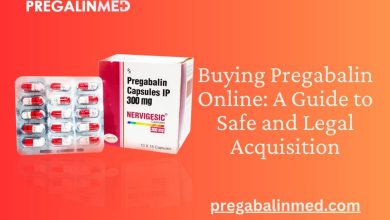How Can You Treat Pus from an Ingrown Toenail?
How Can You Treat Pus from an Ingrown Toenail?

Ingrown toenails can be painful and often lead to discomfort, swelling, and pus if left untreated. If you’ve ever experienced this condition, you know how frustrating it can be. However, understanding how to treat ingrown toenail pus effectively can help you find relief and prevent further complications. In this blog post, we’ll explore the causes of ingrown toenails, signs of infection, and effective treatment options to manage pus and promote healing.
What is an Ingrown Toenail?
An ingrown toenail occurs when the edge of the toenail grows into the surrounding skin, leading to pain, redness, and swelling. This condition most commonly affects the big toe but can occur in any toe. Factors such as improper nail trimming, wearing tight shoes, or genetic predisposition can contribute to the development of ingrown toenails.
Recognizing Ingrown Toenail Symptoms
It’s essential to identify the symptoms of an ingrown toenail early on to prevent infection. Common signs include:
- Pain and Tenderness: The affected toe may be painful, especially when pressure is applied.
- Redness and Swelling: The skin around the toenail may become red and swollen, indicating inflammation.
- Ingrown Toenail Pus: In more severe cases, pus may develop, signifying an infection that requires prompt treatment.
- Foul Odor: An unpleasant smell may accompany pus, indicating a bacterial infection.
Why Do Ingrown Toenails Get Infected?
Infection occurs when bacteria enter the skin surrounding the ingrown toenail. This can happen if the nail punctures the skin, allowing bacteria to thrive. Factors that can lead to infection include:
- Poor hygiene
- Diabetes
- Compromised immune system
- Excessive moisture or sweating
- Inadequate footwear
Steps to Treat Ingrown Toenail Pus
If you notice pus or signs of infection from an ingrown toenail, it’s important to take immediate action. Here’s a step-by-step guide to help you treat the issue effectively:
1. Soak the Affected Foot
Start by soaking your foot in warm, soapy water for about 15 to 20 minutes, two to three times a day. This helps reduce swelling, relieve pain, and soften the skin around the toenail, making it easier to manage. You can add Epsom salt to the soak for added benefits, as it may help draw out infection and reduce inflammation.
2. Clean the Area
After soaking, gently clean the affected area with mild soap and water. Pat the area dry with a clean towel. Avoid using alcohol or hydrogen peroxide, as these can further irritate the skin.
3. Apply an Antiseptic
Using an over-the-counter antiseptic ointment can help prevent further infection. Apply a small amount to the affected area and cover it with a sterile bandage. Change the bandage and reapply the antiseptic regularly, especially after soaking.
4. Lift the Nail
If the ingrown toenail is only slightly embedded, you can attempt to lift the nail gently. Use a clean pair of tweezers to carefully lift the edge of the toenail away from the skin. Place a small piece of cotton or dental floss underneath the nail to help keep it elevated. This technique may encourage the nail to grow above the skin.
5. Pain Management
Over-the-counter pain relievers, such as ibuprofen or acetaminophen, can help manage pain and reduce inflammation. Be sure to follow the recommended dosage on the package.
6. Wear Appropriate Footwear
Avoid tight or ill-fitting shoes while dealing with an ingrown toenail. Opt for comfortable footwear with enough room for your toes to move freely. This can help reduce pressure on the affected area and promote healing.
7. Monitor for Improvement
Keep an eye on your symptoms over the next few days. If you notice any improvement in pain, swelling, and pus discharge, continue with your treatment. However, if symptoms persist or worsen, it’s time to consult a healthcare professional.
When to Seek Medical Attention
While many cases of ingrown toenails can be treated at home, certain situations warrant a visit to a healthcare provider:
- Persistent Pain: If the pain does not subside or worsens despite treatment, consult a doctor.
- Increasing Swelling and Redness: If the swelling and redness around the toenail worsen, it may indicate a more severe infection.
- Fever: A fever may suggest a systemic infection requiring immediate medical attention.
- Diabetes or Compromised Immunity: Individuals with diabetes or weakened immune systems should seek prompt medical advice, as they are at higher risk for complications.
Possible Medical Treatments
If home treatments are ineffective, a healthcare provider may recommend several options:
- Partial Nail Avulsion: In cases of severe ingrown toenails, a podiatrist may remove the portion of the nail that is ingrown.
- Antibiotics: If an infection is present, oral or topical antibiotics may be prescribed to help clear the infection.
- Surgical Intervention: In persistent cases, a more invasive procedure may be necessary to remove the entire nail.
Preventing Ingrown Toenails
Prevention is key when it comes to avoiding ingrown toenails in the future. Here are some effective strategies:
- Proper Nail Trimming: Cut your toenails straight across and avoid rounding the edges.
- Choose the Right Shoes: Wear shoes that provide enough space for your toes to avoid unnecessary pressure on your toenails.
- Maintain Foot Hygiene: Regularly wash and dry your feet to keep them clean and reduce the risk of infection.
- Moisturize: Keeping the skin around your toenails moisturized can prevent it from becoming too dry and cracking.
Conclusion
Dealing with pus from an ingrown toenail can be uncomfortable, but with the right treatment and preventative measures, you can find relief and avoid complications. Remember to soak the affected foot, keep the area clean, and monitor your symptoms. If home treatment isn’t effective, don’t hesitate to consult a healthcare professional for further guidance. By taking proactive steps, you can ensure healthier toenails and a more comfortable life.




